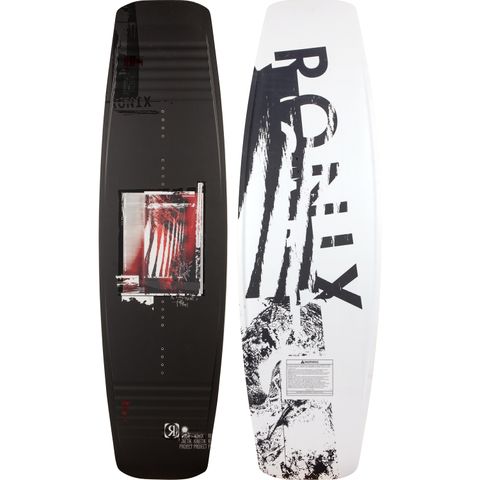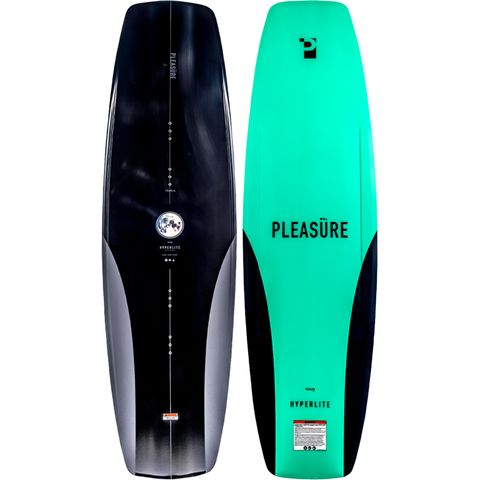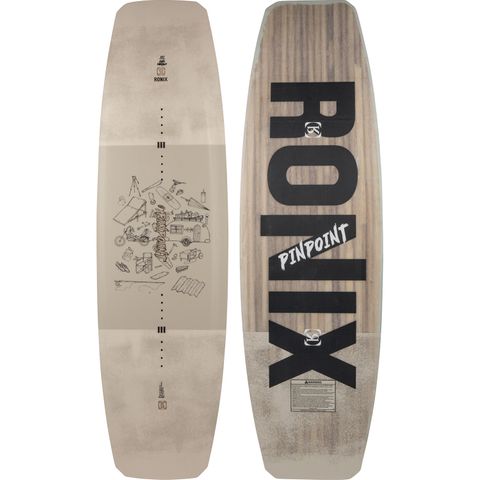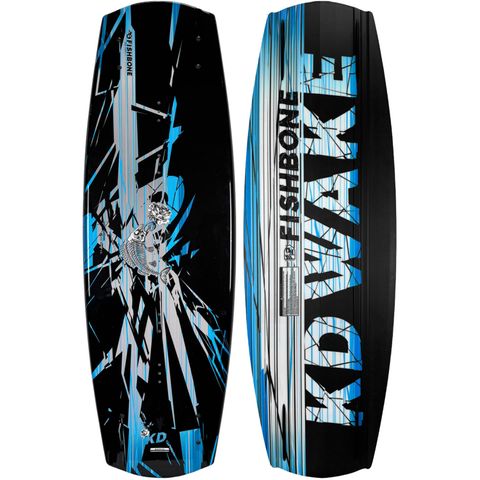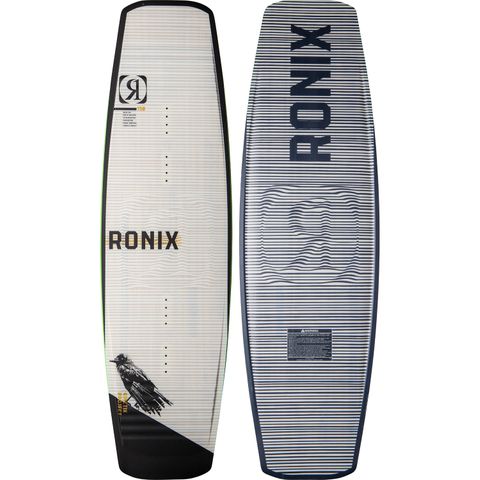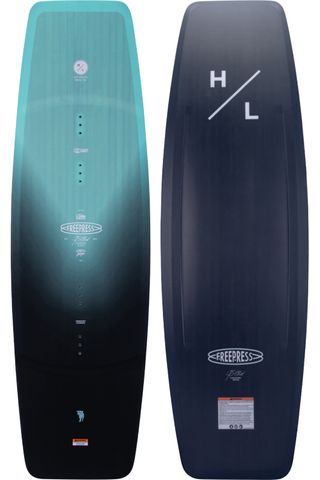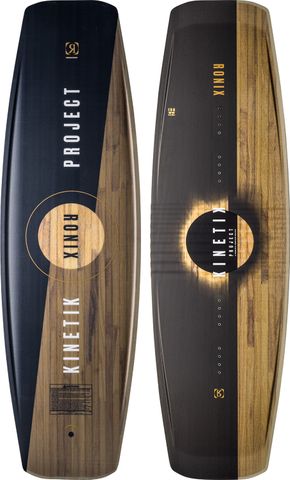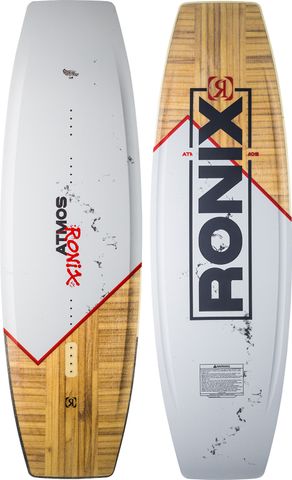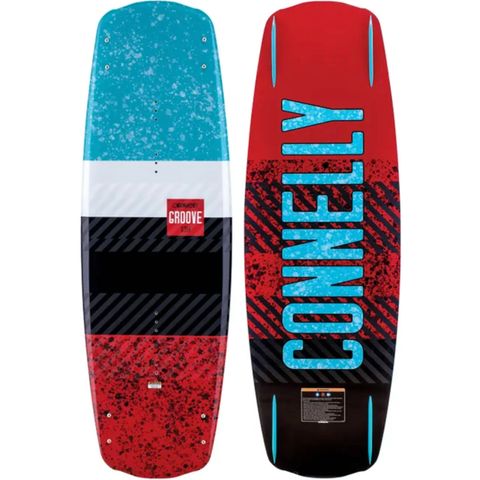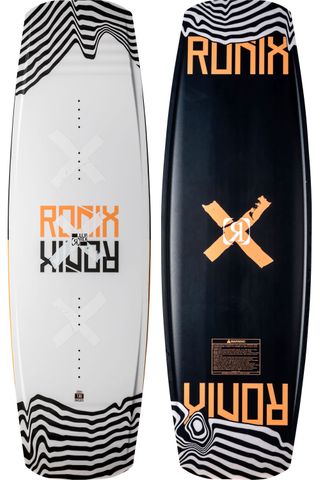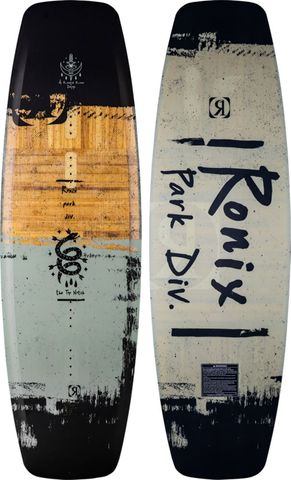Wakeboards - Cable
Cable wakeboards differ greatly compared to their boat specific counterparts. The nature of riding at a cable park is tough on boards due to constant obstacle impact resulting in the need for a more durable construction. In this article, we’ll walk you through what makes a cable board unique, what they’re made of and why it is a good idea to size up!
PROFILE:
The lack of a wake negates the need for 3-stage rockers hence why all cable boards feature continuous rockers. The amount of rocker from tip to tail will vary from model to model. A board with more rocker will result in slower top water speeds but allow for softer landings and more pop onto obstacles. A board with a flat rocker will carry more top water speed allowing riders to boost off kickers and quickly reach all obstacles in the park.
CONSTRUCTION:
Cable specific wakeboards spend most of their time sliding over features such as rails, boxes and jumps therefore it is vital that the construction of a cable board is durable enough to withstand everything you’re going to throw at it. Boat boards can be used at the park however their traditional fibreglass and foam construction will deteriorate quickly. Most cable specific wakeboards feature a sintered [aka “grind”] base that results in a board able to withstand the impact from obstacles for a long period of time.
Cable boards are flexible in the interest of a fun and forgiving ride. Wood cores are found amongst nearly all cable boards as they produce a suitable balance of durability, weight, pop and flex. The cores are CNC machined to varying degrees controlling flex and base channels are added as required. Sidewall material is added around the perimeter for durability with fibreglass wrapping the lot for additional strength. Materials can be introduced to increase response or control flex such as carbon fibre or timber laminates in varying orientations.
FLEX:
Arguably the most defining feature of any cable board is flex. While boat specific wakeboards are designed to be stiff in the interest of pop and response off the wake, cable boards are designed to be flexible in the interest of fun and playfulness whilst riding obstacles. The softer the board, the more playful, however a careful balance needs to be struck to ensure a flexible board can still provide stable landings, solid pop to jump onto features and survive hundreds if not thousands of laps around the park. When choosing a board, it is best to consider what your interests are. A rider that prefers rails will suit a board with a soft flex however a rider that prefers air tricks and kickers will prefer a stiff board that will survive heavy landings. If you ride a range of obstacles at the park, a board with a mid-flex will balance both rails and kickers appropriately.
BASE CHANNELS & FINS:
Cable boards don’t include removable fins* due to riders preferring a loose feel on the water and eliminating the chance of fin’s catching on obstacles. The removal of fins places more importance on base channels which are critical to board performance affecting a boards grip and edge hold. The amount of grip a board provides comes down to rider preference; A board with base channels will provide more edge hold while a board without will be loose and slippery. *Beginner cable boards may include removable fins.
SIZE GUIDE:
Cable wakeboards are ridden in longer lengths compared to boat boards due to slower riding speeds and a few key variables. As a rule of thumb, the shorter the board the more manoeuvrable and lightweight it will feel. However, having a small surface area results in increased drag, harder landings, and an unforgiving feel. In contrast, a longer board will carry more top water speed, softer landings, and a forgiving feel.
- 135 cm (40 - 60 kg)
- 140 cm (50 - 70 kg)
- 145 cm (60 - 90 kg)
- 150 cm (70 - 100 kg)
- 155 cm (80 - 100+ kg)
- 160 cm (90+ kg)





